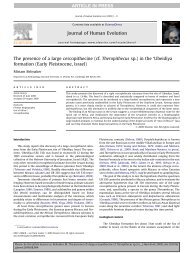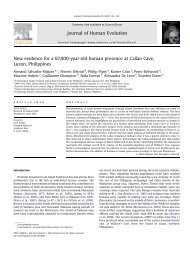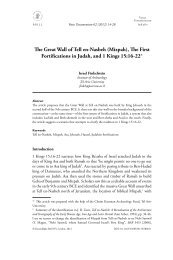Budapest
Budapest
Budapest
You also want an ePaper? Increase the reach of your titles
YUMPU automatically turns print PDFs into web optimized ePapers that Google loves.
.<br />
<strong>Budapest</strong> Collect and made by Jaron Illés<br />
<strong>Budapest</strong> is the capital city of Hungary and the country's principal political, cultural, commercial, industrial<br />
and transportation centre. In 2007 <strong>Budapest</strong> had 1,696,128 inhabitants with an official agglomeration of<br />
2,451,418 [2] , down from a mid-1980s peak of 2.1 million. <strong>Budapest</strong> became a single city occupying both banks<br />
of the river Danube (Hungarians call it the Duna river) with the amalgamation on 17 November 1873 of rightbank<br />
(west) Buda (Ofen in German) and Óbuda (Old Buda or Alt-Ofen) together with Pest on the left (east)<br />
bank.<br />
Aquincum, originally a Celtic settlement, was the direct ancestor of <strong>Budapest</strong>, becoming the Roman capital of<br />
Lower Pannonia. Magyars (pronounced "mahdyars") arrived in the territory around 900. Their first<br />
settlement was pillaged by the Tatars in 1241-42. The re-established town became one of the global centers of<br />
Renaissance humanist culture in the 15th century. Following nearly 150 years of Ottoman rule, development<br />
of the region entered a new age of prosperity in the 18th and 19th centuries, and <strong>Budapest</strong> became a global<br />
city after the 1873 unification of its three constituents. It also became the second capital of Austria-Hungary, a<br />
great power that dissolved in 1918.<br />
Widely regarded as one of the most beautiful cities in the world [4][5] , <strong>Budapest</strong> is considered an important<br />
Central European hub for business, culture and tourism. Its World Heritage Sites include the banks of the<br />
Danube, the Buda Castle Quarter, Andrássy Avenue and the Millennium Underground railway, the first on<br />
the European continent. <strong>Budapest</strong> attracts over 20 million visitors a year, making it one of the top destinations<br />
in Europe. The city ranks 74th on Mercer Consulting's 'World's Top 100 Most Livable Cities' list ] .<br />
.
http://www.campus-zone.com/index.php?option=com_content&task=view&id=18&Itemid=40<br />
Buda Castle was built on the southern tip of Castle Hill, next to the old Castle District (Hun: Várnegyed), which is<br />
famous about its medieval, Baroque and 19th century houses and public buildings. It is linked to Adam Clark Square<br />
and the Széchenyi Chain Bridge by the Castle Hill Funicular.<br />
History<br />
The first royal residence on the Castle Hill was built by King Béla IV of Hungary between 1247 and 1265.<br />
The oldest part of the present-day palace was built in the 14th century by Prince Stephen, Duke of Slavonia, the<br />
younger brother of King Louis I of Hungary. The Gothic palace of King Louis I was arranged around a narrow<br />
courtyard next to the Stephen's Tower.<br />
King Sigismund Luxemburg of Hungary greatly enlarged the palace. During his long reign it became probably the<br />
largest Gothic palace of the late Middle Ages. Buda was also an important artistic centre of the International Gothic<br />
style.<br />
The last phase of grand-scale building activity happened under King Matthias Corvinus) when Italian humanists,<br />
artists and craftsmen arrived at Buda. The Hungarian capital became the first centre of Renaissance north of the<br />
Alps.<br />
After the Battle of Mohács the medieval Kingdom of<br />
Hungary collapsed. On 29 August 1541 Buda was occupied again by the Ottomans without any resistance. The<br />
Hungarian capital became part of Ottoman Empire as the seat of the Eyalet of Budin.
The Fishermen's Bastion<br />
http://www.fsz.bme.hu/hungary/budapest/bptour/bpcast02.htm<br />
The Fishermen's Bastion (mpeg !) is one of the most popular spots of the Castle District with<br />
visitors, as it offers a grand panorama of almost the entire city. It is situated ac the eastern side of<br />
Castle Hill, and can be reached from the centre of the district, Szentháromság tér (Trinity<br />
Square). Its architecture is characteristic of the turn of the century; its flights of stairs, its<br />
projections, its turrets, and its ambulatory-like galleries make it a mixture of the neo-Gothic and<br />
neo-Roman- esque styles and of the romantic baronial castles. In 1901-3, the aim of its architect,<br />
Frigyes Schulek, was to provide a worthy setting for the Church of Our Lady (Matthias Church);<br />
when building it he also made use of the remaining stones of the old Castle wall.<br />
The Fishermen's Bastion received its name from the medieval ramparts system which rose above<br />
the suburb named Fishermen's Town; furthermore, there used to be a fish-market behind the<br />
ramparts. Beneath the Fishermen's Bastion lies the old suburb of Vízi- város (Water Town), now<br />
full of new bindings; its Baroque church towers recall the past. Looking to- wards the north we<br />
get a view of the Danube with Margaret Island.<br />
The building which dominates the panorama of the Pest bank is that of the Parliament with its<br />
dome and spires. At the head of the Chain Bridge in Pest stands the building of the Hungarian<br />
Academy of Sciences, with the dome of the Basilica in the background. Further down the block<br />
of the Hotel Duna Inter-Continental becomes visible. The church towers between the Chain<br />
Bridge and Elizabeth Bridge are reminders of the past of the Inner City of Pest.<br />
Beyond the vast, somber mass of the buildings of Pest, there rise in a semicircle the high-rise<br />
blocks of the new housing estates built in the 1960s. Casting our glance towards the south we see<br />
the Chain Bridge (Lánchíd), built in 1849 in neo-Classic style, rebuilt in 1949, further to the<br />
south the most recently reconstructed bridge, 1964-spans the river. The panorama ends at the<br />
dolomite rocks of Gellért Hill.
HADTÖRTÉNETI MÚZEUM<br />
(Museum of Military History)<br />
History of Hungarian armory uniforms armor weapons and battle scenes. Exceptional visual<br />
value and some shocking surprises as well. Hussars Cannons and much much more. 1st<br />
district Tóth Árpád sétány 40.<br />
Open to visitors: Apr. - Sept Tue - Sun: 10 a.m. to 6 p.m.<br />
closed Mondays.<br />
Okt - Mar. Tue-Sun: 10 a.m. to 4 p.m. closed Mondays.<br />
History of hand weapons. History of wars in Hungary from 896 to 1711. The Hungarian<br />
Royal Army from 1922-1945.
The Heroes' square http://www.budapestinfo.org/herossquare<br />
The Heroes’ square is one of the most visited sights of the Hungarian capital, it is situated at in<br />
front of the City Park, at the end of the Andrássy Avenue, one of the most important streets of<br />
<strong>Budapest</strong>, a World Heritage site. The millenial monument was built in 1896 to commemorate the<br />
1000th anniversary of the arrival of Hungarians in the Carpathian Basin. The monument consists<br />
of two semi-circles on the top of which the symbols of War and Peace, Work and Wellfare,<br />
Knowledge and Glory can be seen.
http://www.szoborpark.hu/<br />
Balatoni Road, Szabadkai Street Corner<br />
<strong>Budapest</strong> 1054 Hungary<br />
+36 (0)1 424 7500<br />
cityrama@cityrama.hu<br />
Open Hours9am Tue, Sat (summer); 9am Sat (winter)<br />
After the fall of Communism in Hungary, most of the statues from this era were shipped to this<br />
park on the outskirts of the city. When you buy your ticket, be sure to also purchase the very<br />
well-researched and extremely informative guide-book. Without it the meaning and history of the<br />
statues will be lost to you. How to get here: get to Etele ter by bus number 7. Then take one of the<br />
frequent, out-of-town yellow Volan buses. The one you want is at platform number 2, direction<br />
Diosd.
http://www.budapestindex.com/going-out/attractions/parks-and-gardens/millenaris<br />
Millenáris Park is not just a park, but also a scene for exhibitions, plays, concerts and<br />
performances. The park itself is actually reconstructed Ganz Electrical Factory and you still can<br />
see the parts of machinery that once stood here.<br />
Today it is a modern recreation center with exhibition halls, underground parking lot,<br />
playground, park, ponds, café and theater.<br />
II. Fény u. 20-22<br />
Tel: 438 5312<br />
Open:<br />
Mon-Sun 06:00-02:00<br />
Box-office is open from 10:00 till 18:00 every day
http://www.budapestinfo.org/caves.html<br />
<strong>Budapest</strong> is often referred to as the city of spas. It is not as widely known that it can be called as a<br />
city of caves as well, because approximately 200 smaller and bigger caves can be found under the<br />
capital. These caves were formed by the same springs that today supply the thermal baths. The<br />
majority of the caves were discovered at the beginning of the 20th century, when house buildings<br />
and drainage construction works were carried out. <strong>Budapest</strong> has 9 strictly protected caves and<br />
3 are open to the public.<br />
Pálvölgyi cave<br />
Szépvölgyi út 162.<br />
It was discovered in 1904, during stone extraction. The speleologists found 1200 metres long<br />
passages and beautiful stalagmit formations. It was soon opened to the public, equipped with<br />
electric lighting in 1927. Since 1944 it is a nature protected area. There has been continous search<br />
for new passeges and by 1980 the lenght exceeded 13 kilometres. In 2001 the connection with the<br />
neighboroughing Mátyáshegyi cave was discovered and as a result of this today this cave-system<br />
is the second longest in Hungary with its 18km length. For visitors guided tours are organised in<br />
every hour. The temperature is around 8 Celsius, warm clothing is recommended. The tour lasts<br />
about 50 minutes during which 500 metres are covered. There are ladders and steep stairs, it is<br />
not recommended for the physically challenged and for children under 5. Opening hours:<br />
Tuesday to Sunday from 9am to 4pm.<br />
It is also possible to visit the unbuilt, natural areas of the cave, if you are interested in a more<br />
adventurous way of exploring the caves, please see:<br />
Sightseeing under <strong>Budapest</strong> - caving tours in the undeveloped parts of Pál-völgyi-Mátyás-hegyi<br />
cave system
http://en.wikipedia.org/wiki/Margaret_Island<br />
http://www.melyepterv.hu/en/civil_engineering_structural_and_superstructural.html<br />
Margaret Island (also Margitsziget, Margit-sziget; occasionally Margit Island) is a 2.5 km long island (0.965 km² in<br />
area) in the middle of the Danube in central <strong>Budapest</strong>, in the 13th district, between the two city parts, Buda and Pest.<br />
The island is mostly covered by park areas, and is a popular recreational area for tourists as well as locals. The island<br />
spans the area between the Margaret Bridge (south) and the Árpád Bridge (north).<br />
Its best-known landmarks are:<br />
• the Centennial Memorial (see picture), commemorating the hundredth anniversary of the city's unification;<br />
• a small Japanese Garden with a mildly thermal fish pond;<br />
• a tiny zoo featuring a wide range of exotic waterfowl among other animals;<br />
• the "Music Well" (Zenélı kút), a small pavilion, which was originally built for open-air concerts (it is close<br />
to Árpád bridge);<br />
• the "Music Fountain" (Zenélı szökıkút), a fountain near which music is played and light shows are<br />
performed in summer (it is close to Margaret bridge);<br />
• an octagonal Water Tower of 57 m (built in Art Nouveau style in 1911, today functioning as a lookout<br />
tower and an exhibition hall, see picture).<br />
The Music Fountain and the Water Tower are protected UNESCO sites.<br />
The island houses various sports establishments, like the Palatinus water park (the largest open-air swimming<br />
complex in <strong>Budapest</strong>), the Alfréd Hajós sports pool (where the European LC Championships 2006 took place), a<br />
tennis stadium and an athletics centre.<br />
The Centennial Memorial
Two hotels provide accommodation: the fin de siècle Grand Hotel Margitsziget, and the modern<br />
Thermal Hotel Margitsziget with thermal spa and various medical services. There is also an openair<br />
theatre accommodating an audience of 3500, and several clubs and restaurants. For<br />
exploration and pastime, four-person cycle cars or small electric cars can be rented for use on the<br />
area of the island.
http://photos.igougo.com/pictures-photos-b143334-s2-p44650-Counter.html<br />
The Ruszwurm patisserie, originally opened in 1827, still thrives today with both locals and<br />
tourists crowing around its small tables for homemade cakes and drinks. It's interior reflects the<br />
Empire décor that would have been commonplace in the
http://theworldbyroad.com/photos/main.php?g2_itemId=10465<br />
טשפדובב םימח תואצחרמ
















